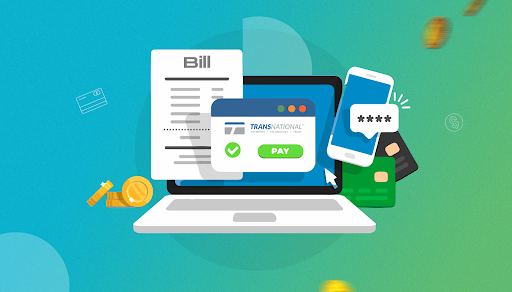Your Guide to B2B Payment Methods
Modernizing how you process B2B payments can help streamline your payment operations and strengthen vendor relationships. It allows you to process...
5 min read
 DocuPhase
:
Feb 7, 2023 5:13:15 PM
DocuPhase
:
Feb 7, 2023 5:13:15 PM

At a time when anyone can pay for a pizza — or a roundtrip flight to Italy — from any mobile device in just a few seconds, the last thing a company should do is limit what types of payments it accepts from its customers.
The use of electronic payment methods like mobile wallets and digital cards was already growing steadily before the COVID-19 pandemic made the need for cashless and contactless commerce the norm. But the past couple of years have proven that consumers and businesses alike want maximum flexibility when it comes to making payments.
Consider, some 82% of Americans used digital payments to pay for goods and services online and at store checkouts in 2021, up from 78% a year earlier, according to a report by global management consulting firm McKinsey & Co.
And all signs point to the trend growing, in both the B2B and B2C sectors. The total transaction value of digital payments in the U.S. will reach $2.04 trillion this year, a 15.6% increase from 2022, and climb to about $3.53 trillion by 2027, according to a forecast by Statista.
The marketplace’s verdict is clear: For companies that want to improve customer experience, while reducing costs and minimizing delays, offering flexible, fast and effective payment processing is a must.
In this article, we’ll present seven essential tips for optimizing payment processing so that you can:
Cash flow is a company’s lifeline, especially in uncertain economic times. Businesses that accommodate a variety of payment options will win over more customers and increase the likelihood that they’ll be paid faster. Yet to fully maximize cash flow, companies must also reduce their DSO and minimize costly exception items.
Customer expectations are rising, and a positive customer experience is crucial for retention. The more payment options you can offer your customers, the better. This goes beyond credit cards, wire transfers, debit cards, checks and ACH transfers.
The use of digital wallets like Apple Pay and Google Pay is becoming increasingly common. More than two-thirds of Americans expect to have a digital wallet within two years, according to a survey last year by McKinsey & Co.
Remove any payment 'friction' from your merchant portal by using a system that lets your customers pay on their mobile device, via text message, digital wallets or online.
Think your company is doing the best it can to ensure customers are paying in a timely manner? Your DSO, or Days Sales Outstanding, might tell a different story. That’s the average number of days it takes for a company to receive payment from a sale or service rendered.
A business with a high DSO is typically experiencing lengthy delays getting paid by customers. So, anything that lowers DSO is good for business and a sign that the company’s cash flow is healthy.
Providing more payment options will help you reduce your DSO, as will invoicing immediately. An automated payment solution can also help cut down your company’s DSO by streamlining invoice management. This starts by speeding up payments and eliminating the lengthy processing time associated with paper checks.
Offering your customers payment options that they’re comfortable with, including self-service capabilities, also provides convenience and minimizes hassle to encourage on-time payments.
One red flag to watch out for: An inordinate amount of exception items, or payments that fail to be fully processed.
This can happen due to relatively simple mistakes like a typo on a check or a missing signature, though errors with credit cards, ACH transfers, lockboxes and other types of transactions can also end up as exception items.
An automated payment processing provider can minimize the occurrence of exception items by reducing human error and quickly identifying and correcting any issues. For example, DocuPhase’s form-based online portal prevents avoidable errors that can hold up the payment process by alerting the user when fields need to be corrected before the submission will go through.
Keeping a lid on expenses isn’t always possible, even in the best-run business, as unexpected costs can crop up at any time. However, focusing on limiting wasted time can prove to be even more valuable.
Technology can go a long way to streamline a business’ operations, and accounts receivable is no exception.
Managing customer accounts that have fallen behind on their payments and sending out past due notices can eat up a lot of time, not to mention expenses. Companies should graduate to using payment platforms that automate tasks such as sending customers reminders when they’re past due.
Offering features like autopay can also increase the likelihood that customers will pay more quickly. This beats waiting for a payment to arrive by mail. It also eliminates the tension of those awkward phone calls to chase down payments.
A key element of this is making it easy for customers to view invoices or access historical account activity, which can help them stay on top of what they owe without having to task a company’s customer service operation.
Perhaps most importantly, an automated billing and payment approach can also reduce the possibility that a customer who is behind on their bill will end up taking so long to pay that their outstanding balance becomes a bad debt.
Companies that offer multiple types of payments have to wade through a complicated process of banking industry and government compliance requirements.
These include the Payment Card Industry (PCI) Data Security Standard, which applies to the handling of information related to credit cards, on top of various other verification requirements and security standards established to protect against fraud.
If managing compliance is becoming a consistent headache, using a managed payment processing service can completely remove the burden of regulation and compliance associated with taking electronic payments. A solution like DocuPhase ensures that all payments are PCI Level 1 compliant, and makes it simple to offer your customers this built-in compliance.
Finding an easier way to navigate compliance challenges is among the reasons many companies have decided against a DIY approach to their payment processing. Consider, some 50% of card spending in the U.S. takes place online, with a large portion of small and midsize companies already relying on software to manage that end of their business, according to McKinsey & Co.
Keeping costs down and maximizing cash flow can only take a company so far if it’s not also taking steps to weed out inefficiency across its business. Investing in accounts receivable efficiency is money well spent, given its role as the heart of a business’ cash flow.
Integrating your payment processing into your back office operation is a great way to level up your company’s efficiency by significantly reducing the volume of paperwork generated from billing and payments. This is particularly crucial for companies that have to reconcile thousands of customer payments in a short period of time.
A managed payments service provider can enable your AR staff to easily find and retrieve payment and remittance data, and give them a close-up, real-time view into the company’s billing reconciliation process.
In addition to providing real-time visibility, a payment solution that provides seamless integration with your ERP eliminates the need to toggle between multiple systems, and can be configured to your unique accounting and business processes.
An added benefit of this integration is an improved digital experience for your customers, as they can easily find invoices, track payments and see statements.
A robust payment processing system is also a good way to accommodate your company’s needs as it grows and the number of transactions that must be handled increases.
That includes keeping up with accurate billing, invoice notifications, and swift payment processing, which will free up the AR team to tackle more critical tasks.
Ready to upgrade to an electronic payment processing solution? DocuPhase provides hosted and integrated solutions to support high volumes of complex electronic payments. Request a demo today.

Modernizing how you process B2B payments can help streamline your payment operations and strengthen vendor relationships. It allows you to process...

October is cyber security awareness month and conversations surrounding data protection have never been more important or timely. It can be easy for...

TAMPA, Fla., Aug. 9, 2022 /PRNewswire/ -- DocuPhase, a leading provider of Business Process Automation (BPA), accounting automation, and B2B payments...